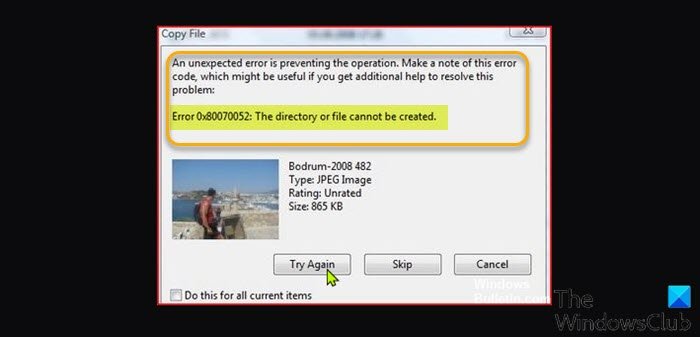When you encounter this issue, you’ll receive the following full error message; In most cases, the issue is reported to occur with photos, videos (especially the files with a name of more than 20 characters). The following are the most likely culprit to this error; Error 0x80070052: The directory or file cannot be created.
The directory or file name already exists on your USB.The directory path could not be found on the drive.There is no enough disk space on the USB.The file or the directory name is invalid because it contains unacceptable characters.The USB drive may not be formatted properly.Windows system files are damaged.
What does it mean when fFile cannot be found?
Usually, when a PC user encounters the File could not be found error message on Windows 10/11 computer, it will be when the user is attempting to open a Microsoft Office file. The error message simply indicates that the file you are trying to open or access does not exist or can’t be found on the system.
How do I fix File not found error?
Some PC users when attempting to save a file on the desktop or the documents folder on your Windows 10/11 computer, maybe hit with the File not found, Check the file name and try again error message. This error occurs because of Controlled Folder Access preventing untrusted programs from writing to protected areas like the Desktop or Documents folder. To fix the issue, you can simply turn off Controlled Folder Access.
Error 0x80070052, The directory or file cannot be created
If you’re faced with this Error 0x80070052, The directory or file cannot be created issue, you can try our recommended solutions below in no particular order and see if that helps to resolve the issue. Let’s take a look at the description of the process involved concerning each of the listed solutions.
1] Run File and Folder Troubleshooter
Whenever you encounter issues on your Windows 10/11 PC, and you’re aware of any in-built troubleshooters or non-native troubleshooters, it’s recommended and encouraged that you run the automated wizard. This solution requires you to run the File and Folder Troubleshooter and see if the Error 0x80070052, The directory or file cannot be created issue is resolved. If not, try the next solution.
2] Change file permission
It may be that the file you’re trying to copy has insufficient permission. In this case, you can assign full control permissions to the file or take full ownership of the file, and then try the copy operation again. If unsuccessful, try the next solution.
3] Create a new folder on the USB Drive
It’s likely you’ll encounter this error while trying to copy the files on the root folder. In this case, to resolve the issue, you can create a sub-folder on the removable drive, and then copy the file to that folder instead of pasting the file directly onto the USB drive root folder.
4] Reconnect USB Drive
This solution simply requires you to simply unplug the external drive and then plug it back and retry the file copy operation. If the error reappears, you can plug the external drive into a different USB port on your Windows PC and see if the issue is resolved or try the next solution.
5] Make sure the USB drive has sufficient storage space
You’re likely to encounter this error if there is insufficient available disk space on the USB for the file or directory to be copied to. In this case, you can delete un-needed but space-consuming files on the USB drive to free some space. You can use a disk storage space analyzer to see what’s hogging storage space on the USB external drive. If however, deleting files on the USB drive is not an option for you, you can use another external storage media with sufficient storage space.
6] Format USB drive to FAT32 or NTFS
Investigations show that FAT16 is the most common file system format that is reported to cause this issue. This is so if the file system of the USB external drive you’re trying to copy files to is formatted to an older file system. In this case, you can format the external drive to FAT32 or NTFS.
7] Change the name of the folder/file
This error can also occur if the files or directory you’re trying to copy to the USB drive include special characters like “&”. In this case, to resolve the issue, you should rename the file or folder on your Windows computer and then copy it to the external device. Renaming the file, also make sure the name is not more than 20 characters long.
8] Decrypt encrypted files (if applicable)
If you’re copying encrypted files from your Windows PC to an external drive, you may encounter this error. In this case, simply decrypt the file and then retry the copy operation to the USB drive. Once you have the files on the USB drive, you can re-encrypt the files.
9] Run CHKDSK
To rule out possible disk drive bad sectors being the culprit to the issue at hand, you can run CHKDSK on the internal drive. as well as run CHKDSK on the external drive you’re trying to copy to. Afterward, you can try the copy operation again. Any of these solutions should work for you! Related post: Error 0x80070780, The file cannot be accessed by the system.

